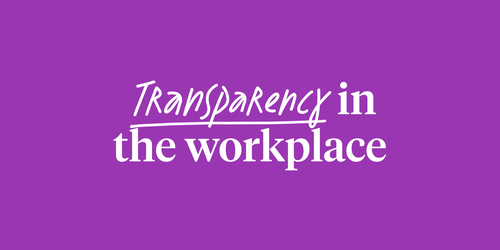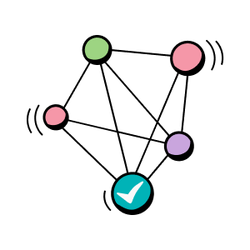
Article

Written by

Writer, Culture Amp
Employee performance has long been a priority for leaders and HR teams. Companies are eager to build a high-performance culture that pushes employees to be their best.
But here’s the thing: Your employees are just as hungry to learn and improve their performance.
A survey from the Society for Human Resource Management found that 49% of employees want to develop their skills. In separate research from Gallup, nine in 10 millennials say professional development or career growth opportunities are very important to them in a job.
Yet, too often, employee performance is left to chance – with infrequent and unproductive performance reviews, murky expectations, and performance metrics that seem pressing at the moment but are quickly abandoned and forgotten.
This speaks to why a performance management system is so valuable. It formalizes your performance management cycle and helps your company take a more intentional approach to employee development and performance.
This guide covers what you need to know to set up a performance management system that supports your employees in doing their best work – and boosts their job satisfaction in the process.
A performance management system is a process or tool that your organization uses to set performance goals, track employee progress, evaluate performance, and provide relevant feedback – all to improve employee effectiveness and outcomes.
But today, when most people mention a performance management system, they aren’t talking about the general approach to performance management. Instead, they’re referring specifically to performance management software.
Performance management software is the digital platform that an organization uses to establish clear performance expectations, monitor progress and key performance indicators, and conduct and organize employee performance reviews.
If you’ve ever tried to manage employee development and your performance management cycle using scattered documents and random spreadsheets, you likely already have a sense of what makes a formalized performance management system so helpful for organizations.
A solid performance management system benefits both employees and the entire company. Here’s how.
It’s tough (if not impossible) to build a high-performance culture with an ad hoc approach. A performance management system gives you a structured framework for setting employee and organizational goals, tracking progress, and evaluating outcomes. This helps you build a clear, repeatable workflow that’s easily applied across teams and departments and ensures employees feel engaged in the process. Need proof? Using Culture Amp, Meltwater experienced an 84% initial performance cycle completion rate.
Any hint of bias in the performance process can impact employee perceptions of whether the process is fair. Alarmingly, 25% of employees say their supervisor’s personal biases have negatively affected their performance reviews. Fortunately, using a performance management system means establishing clear performance metrics and evaluation criteria to standardize your performance reviews across the board. This minimizes subjective judgments and ensures you use a fair process that assesses employees based on contributions and results instead of personal opinions.
You might think that employees are in the loop on what success looks like in their roles, but Gallup research shows that only 47% of workers strongly agree they know what’s expected of them at work. With centralized goals, performance data, and easily accessible feedback, employees have a clearer understanding of what to focus on and how their performance is measured.
Employees may not recognize how their daily work contributes to the company’s organizational goals. Your performance management system will help connect the dots between individual or team contributions and your bigger company priorities. This lets everyone feel like they’re working toward those overall objectives, which fuels a sense of purpose and improves organizational performance.
With clear goals and detailed tracking of relevant key performance indicators, it’s easier to hold both employees and managers accountable to your performance standards. Performance management features like regular check-ins and documented progress reports allow you to spot when expectations aren’t being met and offer more support to get the employee or team back on track.
Old-fashioned performance management processes are often associated with administrative headaches and time-consuming tasks. Performance management software can automate simple tasks like review reminders, feedback collection, and performance tracking so your managers can focus their time and energy on meaningful conversations and development – rather than chasing down documents or managing spreadsheets. For example, Wave saved 28 days on performance management reporting per cycle using Culture Amp.
Your system will collect and analyze data over time, allowing you to gather valuable insights into trends, strengths, and areas for improvement. You can use this information to identify high performers, proactively address skill gaps, and steer around potential risks. Your performance management system supports a far more proactive approach to employee development and talent management.
All of those insights help you make more consistent, fair, and data-driven decisions about promotions, raises, training needs, and succession planning. You’ll have clear, documented performance evidence to shape and support your choices.

Ultimately, a performance management system helps you systemize, streamline, and improve your approach to employee performance and development. Demonstrating your commitment to employee development offers many other benefits as well, including:
If you think of a performance management system as something you’ll use once or twice a year when performance reviews roll around, think again. It’s a resource that your leaders and employees will benefit from checking regularly to make performance a consistent priority (instead of a sporadic initiative).
With that in mind, let’s take a closer look at the elements of an effective performance management system. In general, you’ll want your system to do the following.
Employees need to understand what’s expected of them – not just in terms of tasks, but also behaviors, goals, and outcomes. This isn’t about micromanaging or obsessing over productivity for productivity’s sake (a common pitfall in many performance management conversations). Instead, it provides a clear roadmap so employees can feel more connected, confident, focused, and motivated to deliver their best.
You’re not just setting goals – you’re working toward them. You want your performance management system to include relevant metrics and key performance indicators (KPIs) to measure how well employees are meeting expectations. When managers regularly review this data, they can identify trends, address challenges, and adjust strategies before a minor challenge snowballs into a bigger problem.
Performance management isn’t just about evaluating employees. It’s about helping them learn and grow. You want your system to support continuous learning and development by setting growth goals, identifying skill gaps, and providing regular progress updates that keep employees focused and motivated.
Employees will receive plenty of performance feedback from their managers, but you’ll also want your system to be a space where employees can regularly and openly share their thoughts, ideas, and concerns – rather than saving them for formal reviews. This ongoing feedback helps managers stay in tune with their teams, address issues early, and foster a culture of support and open communication.

Different companies take different approaches to managing performance and improving professional development. While there’s always nuance and room for personalization, in general, the performance management cycle happens in four distinct phases.
There are different approaches to performance management, so it makes sense that there are also different types of performance management systems to support them. These systems typically fall into two distinct categories:
Let’s take a closer look at each.
These are likely what first spring to mind when you think about performance management. The traditional system relies on annual or semi-annual reviews, where employee performance is evaluated once or twice a year. With this system, feedback is formal, infrequent, and often retrospective – focused on past performance as opposed to future development.
In contrast, a continuous performance management system prioritizes ongoing development and performance conversations rather than reserving them for a formal time each year. It emphasizes regular check-ins, real-time feedback, and evolving goal-setting.
A continuous performance management system features far more frequent and honest dialogue between managers and employees, which allows for a deeper connection, more relevant feedback, quicker adjustments, and stronger alignment with business needs and priorities.
With that in mind, it makes sense that this is becoming the preferred system for many modern organizations. Some have even dropped annual performance reviews altogether. Back in 2016, 70% of organizations said they were moving toward a more continuous performance management model – a number that’s likely even higher today.
Some companies use a blend of traditional and continuous systems. For example, continuous performance management systems will often include aspects of a traditional system, like performance reviews. Additionally, both systems can incorporate other relevant strategies and methods, such as:
Finding the right type of performance management system for your organization is less about fitting into a specific mold and more about finding an approach that meets the unique needs of your company and your employees.
Performance management systems offer plenty of potential benefits. However, only 2% of CHROs strongly agree that their performance management system inspires their employees to improve.
Implementing performance management software isn’t enough – you need to implement (and stick with) the right software. Here’s how to find it.
Before you explore your options, get clear on what problem you’re trying to address or fix. Are employees disengaged from the performance management process? Do managers find the existing process time-consuming or inefficient? Pinpoint the core problem so you can find solutions that address your specific challenges.
Next, narrow your focus to identify the features you need – and then sort them into must-haves, nice-to-haves, and deal breakers. You’ll also need to iron out your budget here. This will help you avoid flashy features that don’t meet your needs or solutions that are way outside the company’s financial means.
Surface-level demos have their time and place, but evaluating software involves digging deeper with questions like:
Asking these questions will help you uncover any potential limitations early in the process.
While HR is likely the team steering this software decision, they don’t need to go it alone. Involve other stakeholders – like company leaders and even employees – to test the system. Leaders can focus on goal-tracking features while employees can check out the self-reviews or upward feedback tools. Gathering diverse perspectives will help you land on a solution that works well across different roles and needs.
Once you’ve implemented the solution and have been using it for a while, revisit the problem you originally started with. Is the software solving it the way you hoped? Track relevant metrics like engagement rates, time saved on reviews, and employee satisfaction with the process so you can measure success and make adjustments when necessary.

A performance management system can be a game-changer for your organization, but you may encounter a few bumps during implementation. Here’s how to successfully navigate three common challenges.
A performance management system is a process or tool that your organization uses to set performance goals, track employee progress, evaluate performance, and provide relevant feedback. It improves alignment and engagement in the performance management process, which can fuel trust, motivate employees, and address issues with employee retention and turnover.
Performance management software sets clear expectations, tracks progress with relevant metrics, and provides regular feedback. This allows for more transparency, encourages continuous development, and aligns individual goals with organizational objectives – ultimately driving higher performance for employees and the entire company.
A successful process includes:
These components create a consistent framework for goal-setting, tracking progress, and fostering growth in employees and teams.
We recommend doing employee performance reviews twice per year. However, we consider these reviews part of a continuous performance management process that encourages more frequent check-ins and regular feedback.
Traditional performance management relies exclusively on annual or semi-annual reviews, while modern systems emphasize continuous, real-time feedback and ongoing development conversations.
You want your employees to thrive – and they want that, too. But an improvised, slapdash performance management process doesn’t set them (or you) up for success.
That’s why a performance management system is so crucial. When you find the right fit and implement it well, you create an environment where employees can do their best work – and make meaningful contributions to your company’s success.
Request a demo of Culture Amp to see how our performance management software can bring out the best in your employees.